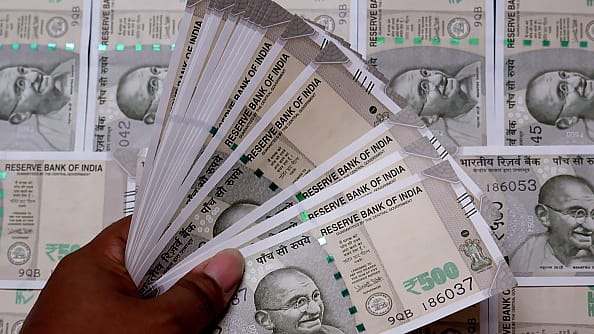RBI should make efforts to internationalise rupee: SBI
ADVERTISEMENT

The Reserve Bank of India should make a conscious effort to internationalise the rupee, as the Russia-Ukraine war and the disruptions to payments caused by it is a good opportunity to insist on export settlement in the rupee, SBI Research says in a statement. The start to this can be made with some of the smaller export partners, it adds.
The note by SBI chief economist Soumya Kanti Ghosh says the global economy continues to be characterised by significant volatility. "On an average, energy, base metals, precious metals and agricultural prices are now down 25% from 52-week highs as markets are anticipating a global slowdown morphing into a full-blown global recession." It's not clear whether such decline is the result of synchronised global rate actions or genuine fears of a recession looming large, it adds.
These developments have a direct impact on inflation, and India could see more inflationary effects in the second half of the current fiscal. "The RBI has been on a course in normalising liquidity and net LAF is now close to the 1.5% threshold non-inflationary level of liquidity. However, the problem is unspent government cash balances that have now jumped to ₹3.1 trillion," says the research note.
January 2026
Netflix, which has been in India for a decade, has successfully struck a balance between high-class premium content and pricing that attracts a range of customers. Find out how the U.S. streaming giant evolved in India, plus an exclusive interview with CEO Ted Sarandos. Also read about the Best Investments for 2026, and how rising growth and easing inflation will come in handy for finance minister Nirmala Sitharaman as she prepares Budget 2026.
India's core liquidity was at ₹6.2 lakh crore against ₹ 8.3 lakh cr at the beginning of April. The central bank this week also announced a slew of measures to augment capital inflows by making NRI deposits more attractive. The central bank's measures on foreign inflows in the debt segment are a welcome step in widening the market.
All of these measures are expected to benefit the external sector. The total NRI deposits showed an inflow of $3.2 billion in FY22 against $7.4 billion in FY21. The FCNR (B) swap scheme in 2013 helped raise around $34 billion of inflows, says the SBI.
On credit growth, SBI analysis shows it expanded at ₹2.6 lakh crore, which outstripped bank deposit growth at ₹1.04 lakh crore in the current year. "The continued growth in bank credit is a matter of comfort and indicates that Indian economy is still navigating through the turmoil rather well," it adds.
Several factors have contributed to better credit growth. First, the incremental credit to micro, small and medium enterprises since March 2020 has been on an upswing. Second, the utilisation of working capital by various sectors, including petroleum, power, engineering and cement, has been impacted adversely across sectors that are specifically linked to the geo-political tensions.
Third, banks continue to be judicious in terms of credit disbursements, as they are careful about the risk profile of borrowers amid uncertainty, says the SBI. Fourth, the spread between AAA corporate bond and 10-year risk-free G-sec rates though started moving upward in April 2022, is still less than half of the average spread at the pre-pandemic level i.e. in FY20.
"Infrastructure including power, renewable energy, petroleum, mining road, NBFCs, cement, aviation, electric vehicles, electronics, commercial real estate, food processing, etc., will drive credit growth in coming quarters," says the SBI.
